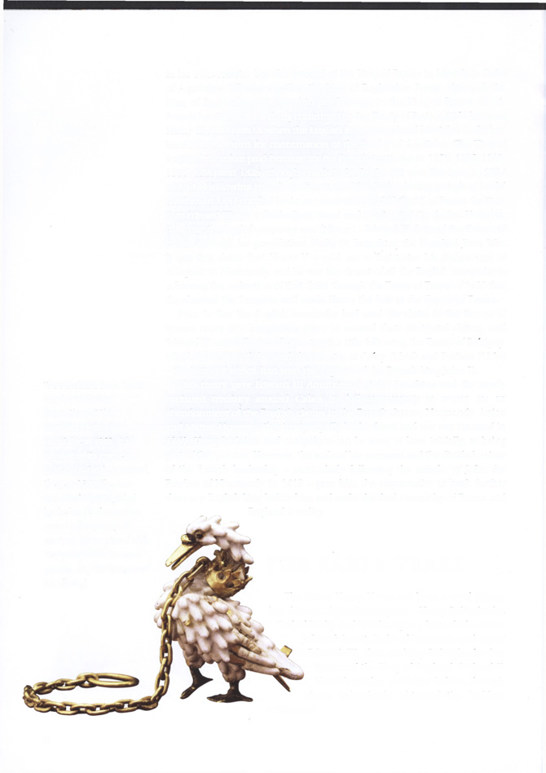Henry V: The Background, Strategies, Tactics and Battlefield Experiences of the Greatest Commanders of History Paperback (2 page)
Authors: Marcus Cowper
Tags: #Military History - Medieval


CONTENTS
The early years 6
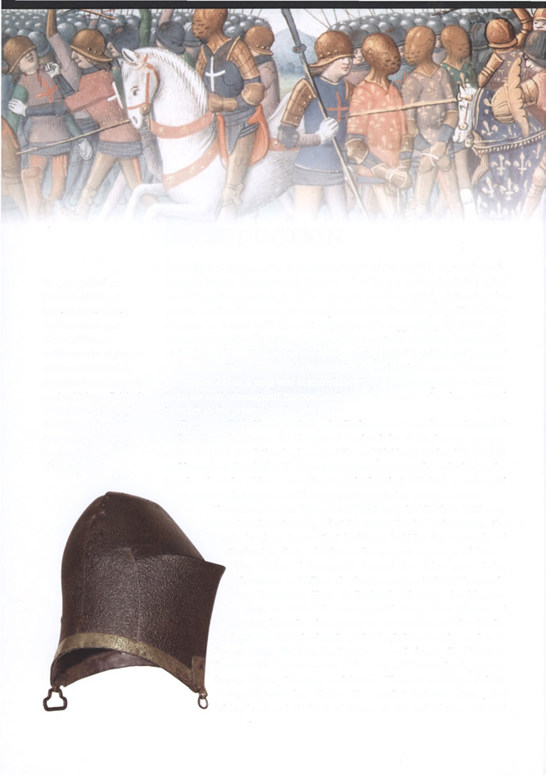
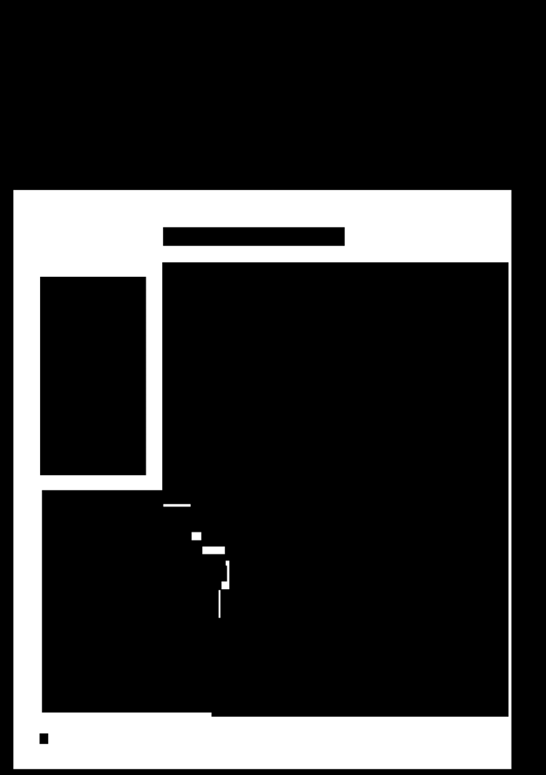
I N T R O D U C T I O N
The battle of Agincourt is a prominent part of the English national myth.
The great helm from
Immortalized in Shakespeare's
Henry V
it has been a national rallying point
the tomb of Henry V
over the centuries, while its victor, Henry V, has been widely claimed as the
in Westminster Abbey.
greatest medieval monarch, the very epitome of medieval kingship. His military
The helm forms part
successes in France, built upon his experiences in suppressing the Welsh and
of a set of funeral
aristocratic revolts of his father's reign, show him to be a military commander
'achievements' of Henry V
of the first order, well skilled in the tactics, strategies and logistical and personal
and was positioned on
skills required by a medieval commander to undertake a war of conquest.
a wooden beam above his
His reputation as a king was acknowledged by his contemporaries, both in
tomb, which was finished
England and throughout Europe, and it is a reputation that has survived
in 1431. The helm is of
through to the present day largely intact.
the tilting style, used
The unassailable Henry as shown by Shakespeare is not the true historical
forjousting. (Copyright
reality. Henry's grip on the throne of England, let alone France, was not
Dean and Chapter
secure in 1413. His father had usurped the rightful king, Richard II, in 1399
of Westminster)
and been forced to deal with numerous uprisings against his rule during the
first decade of the 15th century. Henry too had to deal with both popular and
aristocratic upbringings until his conquests made his position secure.
These conquests in France from 1415 up to his death in 1422 were
concerned with reclaiming what he saw as his lost inheritance, the
Angevin lands in France that had been held by the monarchs of
England in their subsidiary roles as great magnates of France.
The Duchy of Normandy formed the oldest part of this
inheritance, as William the Conqueror was Duke of Normandy
before becoming King of England following the Norman
Conquest in 1066. The marriage of Henry II to Eleanor of
Aquitaine brought the enormous possessions of the Duchy
of Aquitaine into the hands of the English monarchy, and at its
largest extent the Angevin Empire covered almost all of Western
France with the exception of Brittany - Normandy, Aquitaine,
Anjou, Maine, Touraine and Poitou. The vast majority of these
territories were lost during the conflict between King John
of England and Philip II of France at the end of the 12th and
4
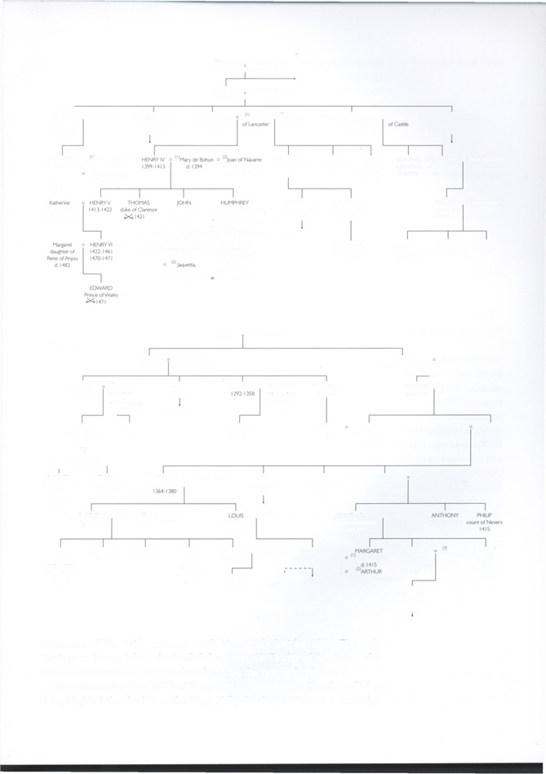
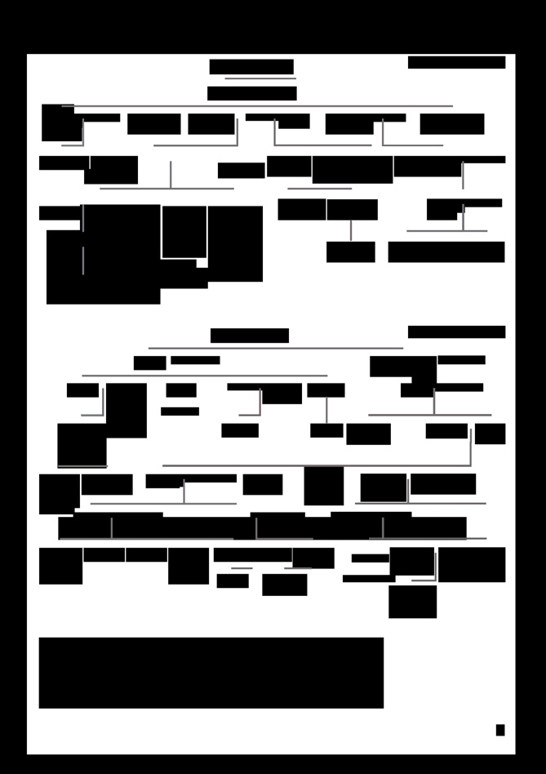
EDWARD II = Isabella, daughter
The English Royal Family
1307-1327 of Philip IV d. 1358
EDWARD III = Philippa of Hainault
1327-1372 d. 1369
I
EDWARD = Joan of Kent
LIONEL of Antwerp
jOHN of Gaunt
Blanche = ^Katherine
E D M U N D of Langley = Isabel
THOMAS ofWoodstock
Prince ofWales
duke of Clarence,
duke of Lancaster
Swynford
duke of York
duke of Gloucester
(Black Prince)
d. 1368
d. 1399
d. 1402
mur. 1397
d. 1376
RICHARD II = Anne of Bohemia
JOHN Beaufort
HENRY THOMAS
EDWARD RICHARD earl = Anne Mortimer
1377-1399 d. 1400
d. 1394
(widow of John IV,
earl of Somerset Cardinal Beaufort Beaufort duke ofYork of Cambridge
(2)lsabel, daughter
Duke of Brittany)
d. 1480
d. 1497 duke of Exeter
of Charles VI d. 1409
d. 1426
JOHN Beaufort
E D M U N D Beaufort
RICHARD = Cecily Neville
daughter of
duke of Bedford
duke of Gloucester
duke of Somerset
duke of Somerset
duke ofYork
Charles VI d. 1437
d. 1435
d. 1447
d. 1444
X . 1455
«X> 1460
= (l)Anne
= ^Jacqueline
daughter of
daughter of William VI
John the Fearless,
count of Holland
duke of Burgundy
(divorced from
Henry Beaufort
EDWARD IV GEORGE RICHARD III
d. 1432
John duke of Brabant)
duke of Somerset
1461 -1470 duke of Clarence 1483-1485
d. 1436
ex. 1464
1471-1483
daughter of
^ Eleanor Cobham
Peter count of St Pbl,
d. 1454
d. 1472
PHILIP III = Isabel of Aragon
The French Royal Family
1270-1285
PHILIP IV
Jeanne of Navarre
CHARLES
Margaret of Anjou
1285-1314
count ofValois and Anjo
u
Anjo I
u j
d. 1325
LOUIS X
1314-1316 v Margaret
PHILIPV
ISABELLA = EDWARD II
CHARLES IV
PHILIP VI = Joan of Burgundy
of Burgundy
1316-1322
King of England
1322-1328
1328-1350
1307-1327
= (2)Clementia
| of Hungary
(2 daughters)
JEANNE
JOHN I
EDWARD III
BLANCHE
PHILIP
BONNE
JOHN II
Queen of Navarre
1316
1327-1377
d. 1392
duke of Orleans
of Luxembourg
The Good
d. 1349
d. 1375
1350-1364
= PHILIP
count of Evreux
, I
CHARLES I
PHILIP
CHARLES V = Jeanne de Bourbon
LOUIS
JOHN
PHILIP
Margaret
King of Navarre
count of Longueville
The Wise '
duke of Anjou
duke of Berry
The Bold
daughter of Louis de Male,
d. 1387
I
d. 1363
d. 1384
mur1416
duke of Burgundy
Count of Flanders
I
d. 1404
CHARLES II
of Navarre
CHARLES VI = Isabeau of Bavaria
= ValentinaVisconti
JOHN The Fearless = Margaret
1380-1422
d. 1435
duke of Orleans
duke of Burgundy
of Bavaria
duke of Brabant
mur1407
mur 1419
1415
\
ISABEL
LOUIS Dauphin JOHN Dauphin
KATHERINE
CHARLES VII = Marie of Anjou
CHARLES
PHILIP
Isabella A N N E
d. 1409
d. 1415
d. 1417
d. 1437
1422-1461
duke of Orleans
Louis Dauphin
The Good
of Portugal d. 1432
= RICHARD II
= HENRYV
d. 1465
duke of Burgundy
= JOHN
King of England
King of England
d. 1467
duke of Bedford
LOUIS XI
John,
1377-1399
1413-1422
count of Richemont
d. 1435
1461-1483
count of Dunois
(illeg.)
CHARLES
The Bold
duke of Burgundy
. X . I 4 7 7
beginning of the 13th centuries, with Normandy lost by 1204. The only
territory in France left to the English king was the Duchy of Aquitaine, also
known as Gascony or Guienne, based around the port of Bordeaux.
This reduced territory still had the power to cause international conflict as
it highlighted the duality of the King of England's position, as a sovereign
5
